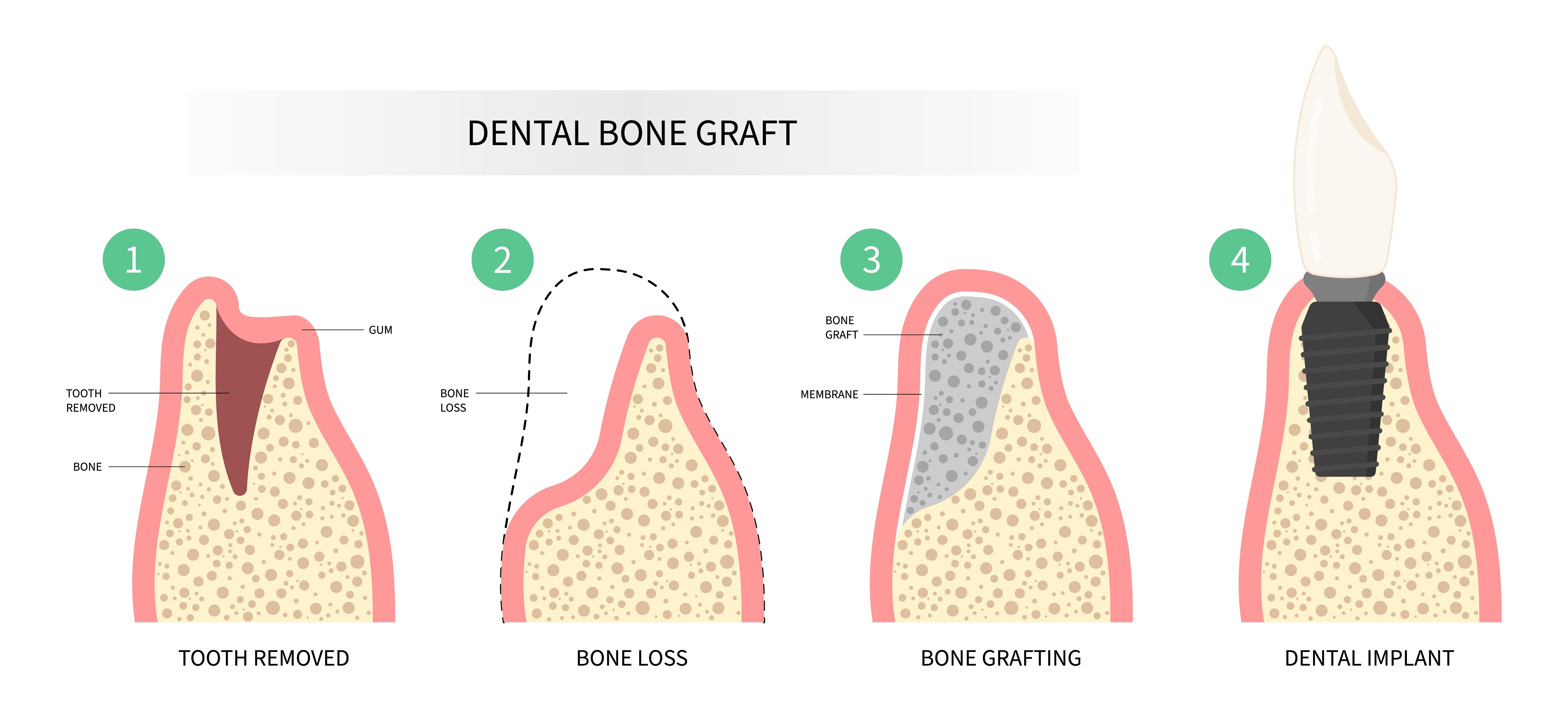How Do Bone Grafts Work?

The human body is an amazing organic machine. It is capable of repairing itself from a wide variety of damage such as cuts, bruises, broken bones, and more. However, it doesn’t always heal as quickly or precisely as we would like.
One of the hardest parts for the body to get right is the mouth, which is why so many people get braces. With modern medicine, we are finding new ways to help the body heal and repair itself better than ever. One of those ways is with the use of Bone Allograft.
What Is Bone Allograft?
Most of the skeleton consists of bone matrix, a complex combination of organic material such as collagen and inorganic material such as salts. Inside this matrix are living cells that work to maintain, heal, and repair damage. These cells can be taken from one place in the body and surgically inserted into another to help assist the healing process. This procedure is known as an allograft.
Bone allograft works like scaffolding, giving your body the space and materials it needs to regrow and regenerate. This bone tissue is usually purchased from a tissue bank or can be made from the patient’s own tissue, which is known as an autograft.
However, not just any tissue works. For the best results, most dental surgeons use either human bone tissues or tissues from the Achilles tendon of cattle. These mineralized bone grafts are used to restore bone volume and allow for tooth replacement when installing dental implants.
Who Needs a Dental Bone Graft?
When loss has occurred to the jaw, a dental bone graft is often needed. This graft isn’t always just to repair the jaw structure but also to build a strong foundation for further dental surgeries.
The most common cause of bone loss is tooth extraction. Activities such as chewing and biting help preserve the jawbone; if a tooth has been removed and not replaced, then jawbone deterioration is likely to occur at that site. During the first year after tooth extraction, as much as 25% of bone can be lost, and this deterioration only continues with time.
Dental grafts can also be required before rebuilding a jaw or adding dental implants. Without a solid foundation for attachment, it can be impossible to securely add dentures or a replacement tooth into a mouth. Periodontal or gum diseases can also lead to bone loss, along with a variety of other complications.
What Is Socket Preservation?
One common use for dental bone allograft is during socket preservation. This occurs when the graft is placed in the socket immediately following extraction to fill the empty void left behind and prevent the sides of the socket from caving in. If you have ever had to have a tooth pulled or removed for any reason by a dentist or oral surgeon, then you most likely had a dental graft for socket preservation.
What Bone Graft Aftercare Is Recommended?
Each year over 500,000 people in the U.S. receive dental implants. Nearly every one of these procedures will require a bone graft, either to rebuild the jawline pre-surgery or for socket preservation post-surgery. Afterward, the patient can expect some discomfort, pain, or swelling for roughly a week or two, and most patients claim to feel normal again within a month after their bone graft. During this time, patients are advised to eat soft foods and to resist putting extra pressure on the bone. Diets of well-cooked potatoes, oatmeal, and omelets are recommended.
Everyone’s mouth is different, and more severe conditions or underlying complications can extend recovery time. While you may feel back to 100% after a few days, it can take some time for your mouth to fully heal. After the initial procedure, it can take months for your body to fully absorb and regrow using the allograft. Recovery time between the initial procedure and the dental implant depends on many factors, such as the patient’s ability to recover, the type of graft, and the location of the graft. This means it can often take three to nine months between the graft and the dental implant.
|
|
|